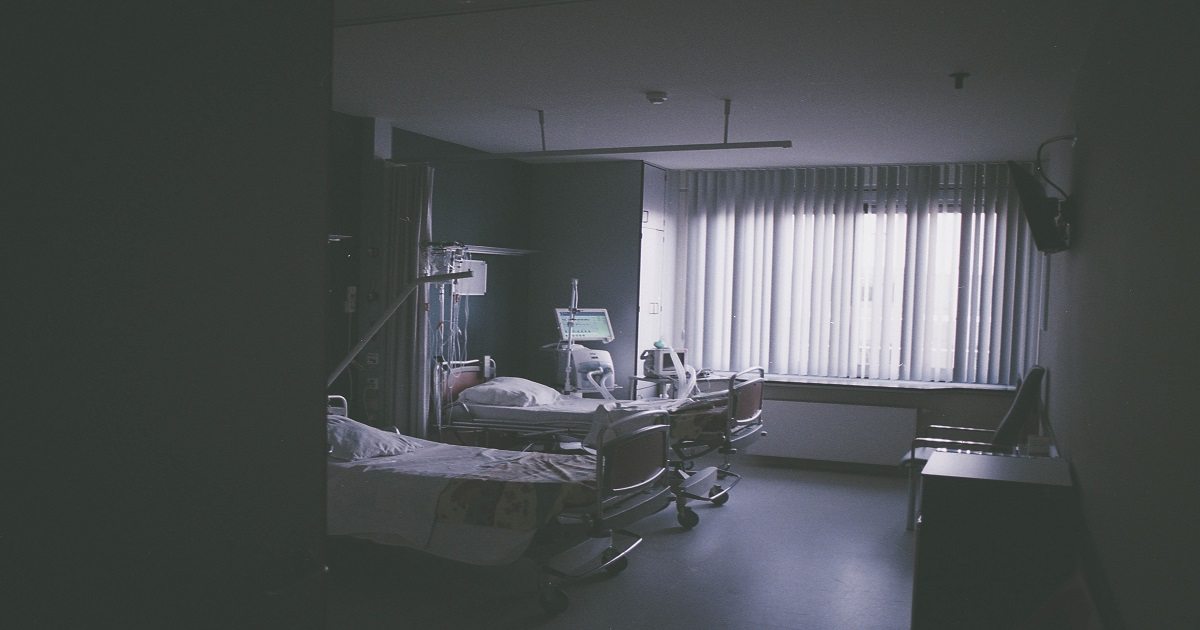Author: Lisa Hyde-Barrett

Nurse Encourages Mesothelioma Patients
We all know that everyone’s mesothelioma is as unique as their own fingerprints. I visited three patients this week, and there is no doubt that each recovery is as unique as the patient. Although the patients all had similar surgery, their recovery has taken its own course.
The first patient I saw was a man who was staying at a local apartment which he rented for his wife and himself. He chose this option because he traveled from another state and it suited his needs. He had surgery approximately one month ago, and he has had clots and one readmission since his original discharge.
One of his biggest issues is his lack of appetite. Nothing tastes good and he is not interested in eating. He was placed on an appetite stimulant which hopefully will improve his nutritional status. They are anxious to return home, but they both realize that this is the place for them for now. Attached to him is a pneumostat [chest drain] waiting for his lung to heal. It is a device that can be uncomfortable and a nuisance, but it allowed him to be discharged from the hospital. He also has complaints of tenderness and pain at his incision site and across his abdomen.
Usually patients have numbness and then a tingling uncomfortable feeling. Although he has weaned himself from the narcotics and is improving, he was unsure of his physical complaints. As I explained, nothing is normal, yet everything is normal.
The next patient I saw had surgery about two months ago. His hospitalization was lengthy because of infection. He finally made it to rehab and was so grateful to be there. He was grateful for his new environment as well as his previous hospitalization. He was full of gratitude and felt fortunate to have come to a place where someone could treat his disease. His stay at rehab was a couple of weeks, but he was planning on being discharged within the week. He was anxious to get home and to be around his family and friends.
The last patient I saw had been at rehab for approximately seven weeks. Unfortunately, her progress was slow. Her surgery was about 15 weeks ago and she was very de-conditioned. Her body was weak and she required the assistance of a ventilator to help her breathe. Another factor that seemed to cause issues was her anxiety. Often times her anxiety inhibited her progress. This week she was able to be off the ventilator for 3.5 hours – a huge accomplishment. Her home is not close to rehab so her visits from family and friends are regular, but not as frequent as we all wished for her. Although this has been a long road there is hope and improvement.
We know that patients struggle with mesothelioma and the recovery, but there is light at the end of the tunnel. We all have our own unique stories to tell.
Nurse Reminds Us of the Importance of Mesothelioma Awareness Day
September 26th of each year is Mesothelioma Awareness Day. The day has been made possible by the efforts of many volunteers over many years. Established as a national day through a proclamation by the U.S. Senate and the U.S. House of Representatives, this day has been set aside since 2010 to raise awareness of the dangers of asbestos. Currently, 12 states and 34 cities have also proclaimed September 26th Mesothelioma Awareness Day.
According to Disabled World, “An awareness date is defined as a national or international awareness day, week, or month, and is a date usually set by a major organization or government, to commemorate medical research, or ethical cause of importance, on a national or international level.”
The Mesothelioma Applied Research Foundation, the non-profit for mesothelioma awareness and promotion of research for a cure for mesothelioma, has been instrumental in getting recognition of this day. The activities that are planned include wearing blue to raise awareness, fundraisers throughout the country, and supporters at Rockefeller Plaza in New York on the morning of the 26th for the broadcast of The Today Show.
The mesothelioma community needs to use this day as an opportunity to support the victims and their families of this dreadful disease. Research into any cancer is challenging, but into a rare cancer is even more so. By raising awareness, and educating the public and government officials about the importance of funding research, we can all bring hope to the victims of this rare cancer.
Wear blue, participate in a fundraiser, tell people about mesothelioma, do what you can on September 26th, and throughout the year, to help support mesothelioma patients and their families.
Moving Past the Fixed State of Being a Mesothelioma Patient
Recently, when reading a blog entitled, “What was the hardest thing you went through in life and how did you get past it,” by Paul Millerd, I came across a quote that struck me. While describing his health challenges, he said, “Identifying as a sick person implied I was stuck in a fixed state.” When someone is diagnosed with an illness it becomes part of their identity. What part of that identity is as individual as we are. Before a life-changing or altering diagnosis, such as mesothelioma, what were your dreams, plans and aspirations? Does being diagnosed and living with a chronic disease define who you are? Life is changed, but is the disease now who you are, how you identify yourself?
This week I talked with a man who had been diagnosed and treated for mesothelioma three year ago. He looked well and said the past three years had been mostly good, but he had a few challenges that he and his wife had dealt with together. They were concerned that he had progression of disease. While we talked about what they had done the past few years, he was pleased to report they had traveled, he continues to take daily walks, and most importantly they were watching their grandchildren grow. They enjoyed each day, and each other.
His wife was concerned that mesothelioma had progressed, but neither of them identified him as “sick.” In their view he was sick, better and now possibly sick again.
We all want to be remembered for ourselves. Whether that be funny, quiet, patient, kind, or whatever quality we have as individuals. I do not think anyone wants to be remembered as “the sick one.” As mesothelioma becomes a chronic disease, we want to encourage people to live in the present. We cannot control the future, and the past is gone. Enjoy each day as yourself.
Mesothelioma is a devastating diagnosis, both physically and emotionally, to the victims and their families. It takes a lot of support to “live with the disease.” But there is support all around you to help you live with the disease. Do what you need to do. Join a support group, exercise if able, do whatever works for you. Move forward – don’t get stuck in a “fixed state.”

What Does Burnout Look Like for Mesothelioma Caregivers?
Recently, a patient and her husband returned to the hospital for a routine a checkup. Running into them in the hall, I found it difficult to remember who the patient was and who the caregiver was. The woman was recovering from a complicated course with mesothelioma – her partner had been by her side and with her non-stop throughout the past few months. He was also dealing with his own health challenges. When the conversation turned to him he was quick to admit that he was frustrated, short tempered, snapping at everyone, irritable: just about every sign of burnout.
What does burnout look like in caregivers? What is burnout? According to the author of “The Maslach Burnout Inventory (MBI),” Christina Maslach, burnout is “emotional exhaustion, depersonalization, and a reduced sense of personal accomplishments.” There are many symptoms of burnout such as, liability of emotions, sadness and helplessness intertwined with anger, as well as failure to take care of one’s self, not exercising, not allowing time to do the things you enjoy. The caregiver is so stressed that his or her immune system is compromised leaving them more susceptible to common illnesses.
Burnout is not unique to caregivers. The U.S. Surgeon General, Dr. Vivek Murthy, has named emotional well-being a major problem among doctors and he has targeted it as one of the two areas that his office is focusing on this year. Once burnout is recognized, it is vital that you take measures to take care of yourself. Allow yourself time to reconnect with friends and family, do something you enjoy, take a break from your caregiving responsibilities.
There is help. Some of the resources that recognize the importance of preventing burnout in caregivers are HelpGuide.org, AARP, WebMD.
http://www.webmd.com/pain-management/opioid-analgesics-for-chronic-pain
Burnout is a serious issue. Don’t overlook the importance of taking care of yourself as you and your loved one deal with mesothelioma.
Nurse Lauds New Mesothelioma Standard of Care
As a result of a clinical trial, there is exciting news that the standard of care for patients receiving chemotherapy for mesothelioma could be changing. Currently, the standard first line chemotherapy for mesothelioma is pemetrexed and cisplatin. It has been the standard since 2003.
What is the new drug that could change all this? Bevacizumab is the generic name, Avastin is the brand name. Avastin was approved for colon cancer by the FDA in 2004 to be used in combination with standard chemotherapy treatment. It works by inhibiting growth of blood vessels, angiogenesis, and was the first clinically used angiogenesis inhibitor.
This news came from the reporting of a clinical trial comparing the standard treatment of pemetrexed and cisplatin with the combination including the addition of bevacizumab. The trials indicated that overall survival and median progression free survival were longer in patients receiving the combination therapy of the three drugs as opposed to the current standard of therapy. The Mesothelioma Avastin Plus Pemetrexed-cisplatin Study (MAPS) trial was conducted by the French Cooperative Thoracic Intergroup (IFCT).
This is an important advance in the treatment of malignant mesothelioma. Together with other advances scientists are slowly putting together the puzzle that is malignant mesothelioma. Avastin is manufactured and distributed by Genentech. If you are a mesothelioma patient that is considering chemotherapy, ask your oncologist if you are a candidate for the new regimen.
Once again, the importance of clinical trial participation and collaboration may have helped progress towards a cure.
The cost of any new medication should not be a barrier to care. There are resources available, including the Genentech’s website, to find out about financial assistance in your use of the drug.
Free Mesothelioma Patient & Treatment Guide
We’d like to offer you our in-depth guide, “A Patient’s Guide to Mesothelioma,” absolutely free of charge.
It contains a wealth of information and resources to help you better understand the condition, choose (and afford) appropriate treatment, and exercise your legal right to compensation.
Download Now